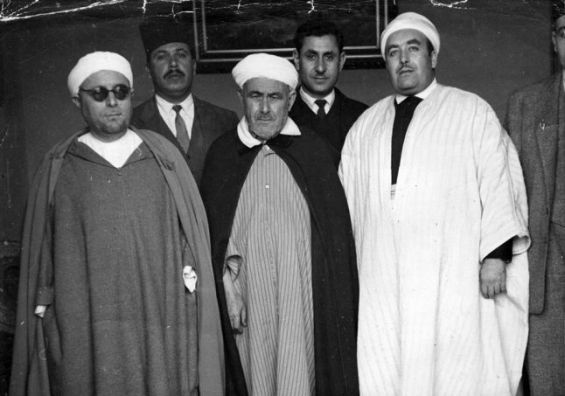On the 6th of November 1955, Sultan Mohammed V and the French Foreign Minister, Antoine Pinay, signed the Celle-Saint-Cloud agreements. The Declaration granted Morocco independence in accord with the principle of Franco-Moroccan interdependence.
Although this «settlement» had satisfied at the time the leaders of the Istiqlal Party, other political forces were fundamentally opposed to it, raising concern regarding the sincerity of the French. Mohamed Ben Abdelkarim El Khattabi was one of the political figures who couldn’t hide his disagreement with the above-mentioned accord. And via his exile in Egypt, he headed an armed revolt that he entitled «the Rif Committee».
Gamal Abdel Nasser’s anger
The politico-military group relied on the support of Gamal Abdel Nasser in Egypt. The latter, who successfully led the 1952 overthrow of the monarchy, was also opposing the fact that Morocco is gaining its independence while Algeria was still under the French control.
The Egyptian president believed that La Celle-Saint-Cloud agreements were an act of «betrayal», writes Mohamed Bensaid Ait Idder in the introduction to his book «le Comité rifain» (The Riffian Committee). He summoned the leaders of the Moroccan, Tunisian and Algerian Army of Liberation and convinced them to sign a document denouncing the accord signed on November the 6th by King Mohammed V and French minister Pinay.
A revolution against France, Spain and the Istiqlal party
This opposition would later lead to the creation of the «Riffian Committee». El Khattabi has already prepared for the launch of an armed coalition of Berber-speaking Rif tribes. For this reason, he trained young officers in academies in Egypt, Iraq, and Syria and then sent them to northern Morocco.
The Achoura and Istiqlal party, headed by Mohamed Hassan El Ouazzani, was expected to help El Khattabi through his network discarded in all the corners of Morocco. The choice of this training was not random as the two men both hated the Istiqlal party.
Officially, the «Riffian Committee» was under the command of Achoura and Istiqlal party, but in reality it was El Khattabi who was controlling everything from his exile in Egypt. This was confirmed through the letters sent by him to his followers and which were published by Mohamed Bensaid Ait Idder center of research and studies.
In one of these letters, dating back to May 17, 1956, he planned traps, explained in his drawings that accompanied his message, to be executed by the 25 men belonging to his «small army» against the «enemy», namely the French Spanish and the Istiqlal supporters.
The failure
However, the «Riffain Committee» failed to change the situation in Morocco. The Istiqlal party led by Allal El Fassi has imposed its «supremacy». The Achoura and Istiqlal Party, which supported El Akhattabi’s project, suffered a repressive campaign led by the Istiqlal followers in Souk Larbaâ, Ghafsai and in the detention centers of Briech and Satiema in Casablanca.
The weapons, expected to be handed over to El Khattabi’s army in Morocco, have never arrived and in some cases reached in small quantities which contributed to the failure.
Finally the men of the «Rif Committee» fell into the hands of the Moroccan police. The book of Mohamed Bensaid Ait Idder publishes the testimonies of 23 members of the short-lived Committee.
Less than two years after the failure of the «Riffain Committee», an uprising broke out in the Rif and was brutally repressed by the Moroccan army.





 chargement...
chargement...













